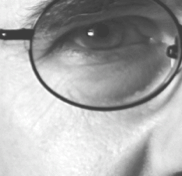Meditation music
Traditionally, listening to any sound is a conscious mind perception. The sound ark provides stimulation to the conscious subconscious and the spiritual (ethereal) mind and body. Through new audio techniques and alterations in conventional music structure the compositions in the sound ark are created with specific intention offering the brain a visual expression of dialogue between the thinking pragmatic mind and the invisible field we might call the soul or our essence.
Bi-lateralization refers to the synchronous use of the left and right hemispheres of the brain. Sounds that encourage new neural nets to be written cross-laterally. These new networks create a more balanced use of the brain itself, allowing one to not only innately create fresh thought and solutions, but re-write over previous non useful patterns created from years of external influences.


The human body is 90% water at birth. The water content in the body of a grown-up person decreases to 70%. The water content drops to 50% with age. So it must be water that keeps humans alive. Man depends on the quality of water in terms of physical and psychological state of his body.
Enter TextI have always been intrigued by the emotional response one could create with music and sound. Music can make a people cry, laugh or even go to sleep. As a composer, recording engineer and producer, I have always been impressed by the power of how sounds and harmonics could alter emotion and perception almost instantaneously. Even as a young musician, I learned that by putting certain chord arrangements together would have an immediate perception of change on the listener.
After a 20 years of operating a commercial recording business, I made the life-altering decision to close my commercial studio. I relocated to Florida, to re-set my previous way of managing my time and to experiment with different music and sound techniques. I concentrated on new ways to invoke feelings of relaxation using sound and music. Some of which, to my surprise, had not been fully utilized before. I began to work from a non-calculated approach to composing music, the main goal being to help one quiet the mind chatter and create the elusive meditation experience. This “meditation music” was different, new to me and to anyone who had listened to my music prior to this period. My electronic synthesis background from the 70’s had given me a great deal of knowledge with manipulating frequencies. I began experimenting with sine wave vibrations and harmonics of exact frequencies and their effect on the brain.
I also read a book called “Vibrational Medicine” by Richard Gerber, MD. This book peaked my curiosity, leading me to test my “new” compositions to find out how quickly the listener could get to a relaxed stage by lowering the brainwave from our normal state of Beta to Alpha / Theta and Delta in a few short minutes. This eventually led me to put together several very lengthly pieces of which I composed and recorded in their entirety with no edits and without stopping, some as long as 40 minutes. I did not think about writing music in the traditional way. I wasn’t thinking about structure. I was creating measures, notes and chords, more abstractly organized than ever before and was allowing my heart to to compose, rather than my head.
Meditation is really about getting out of the “thinking mind” and into “no mind”. No thinking, allowing for total creative insight. I found myself simply allowing a state of meditation to come over my own mind and then let happen, what ever happened. One of the first instruments I initially utilized was a full set of perfectly pitched crystal chakra bowls. I was impressed with the vibrational power and harmonic resonances that truly were musical, yet totally healing. The bowls come from silicon crystal deep in the earth and bear the closest mineral relationship to carbon crystal which human beings are composed of, at cellular level. I would play these bowls for hours concentrating on certain keys that related to the energy centers (Chakras) of the mind and body.
Very soon, I received feedback from people that listened to these pieces. The instances of deep meditative experiences, altered states, out of body experiences, were abundant, but mostly the “relaxation response” was profound.
My wife, and partner Jill, who was previously a voice actor, suggested we record guided voice overs at the beginning of each of the pieces to help the listener utilize additional relaxation techniques. These carefully crafter relaxation and meditation guides concentrating primarily on slowing the breath and focus. This helped people become more immersed physically and mentally in the music and sounds quicker and easier.
We have now marketed these programs for addiction rehab, pain management, stress, depression for over 10 years now. The compositions have been clinically researched and have given comfort to thousands of people, from the battlefield in Iraq, to the worlds leading behavioral change clinics.
I’m proud that so many people have had the experience of meditation with the help of my music and sound creations. It truly does change your life.
rod
The term meditation refers to a broad variety of practices (much like the term sports) that includes techniques designed to promote relaxation, contact spiritual guides, build internal energy and develop compassion, love, patience, generosity and forgiveness. A particularly ambitious form of meditation aims at effortlessly sustained single-pointed concentration single-pointed analysis, meant to enable its practitioner to enjoy an indestructible sense of well-being while engaging in any life activity.
1. INCREASED IMMUNITY
Relaxation appears to boost immunity in recovering cancer patients. A study at the Ohio State University found that progressive muscular relaxation, when practiced daily, reduced the risk of breast cancer recurrence. In another study at Ohio State, a month of relaxation exercises boosted natural killer cells in the elderly, giving them a greater resistance to tumors and to viruses.
2. EMOTIONAL BALANCE
Emotional balance, means to be free of all the neurotic behavior that results from the existence of a tortured and traumatized ego. This is very hard to achieve fully, but meditation certainly is the way to cure such neurosis and unhealthy emotional states. As one’s consciousness is cleansed of emotionally soaked memories, not only does great freedom abound, but also great balance. As one’s responses then are not colored by the burdens one carries, but are instead true, direct and appropriate.
3. INCREASED FERTILITY
A study at the University of Western Australia found that women are more likely to conceive during periods when they are relaxed rather than stressed. A study at Trakya University, in Turkey, also found that stress reduces sperm count and motility, suggesting relaxation may also boost male fertility.
4. RELIEVES IRRITABLE BOWEL SYNDROME
When patients suffering from irritable bowel syndrome began practicing a relaxation meditation twice daily, their symptoms of bloating, diarrhea and constipation improved significantly. The meditation was so effective the researchers at the State University of New York recommended it as an effective treatment.
5. LOWERS BLOOD PRESSURE
A study at Harvard Medical School found that meditation lowered blood pressure by making the body less responsive to stress hormones, in a similar way to blood pressure-lowering medication. Meanwhile a British Medical Journal report found that patients trained how to relax had significantly lower blood pressure.
6. ANTI-INFLAMMATORY
Stress leads to inflammation, a state linked to heart disease, arthritis, asthma and skin conditions such as psoriasis, say researchers at Emory University in the US. Relaxation can help prevent and treat such symptoms by switching off the stress response. In this way, one study at McGill University in Canada found that meditation clinically improved the symptoms of psoriasis.
7. CALMNESS
The simple difference between those who meditate and those who do not, is that for a meditative mind the thought occurs but is witnessed, while for an ordinary mind, the thought occurs and is the boss. So in both minds, an upsetting thought can occur, but for those who meditate it is just another thought, which is seen as such and is allowed to blossom and die, while in the ordinary mind the thought instigates a storm which rages on and on.
Why Meditate?